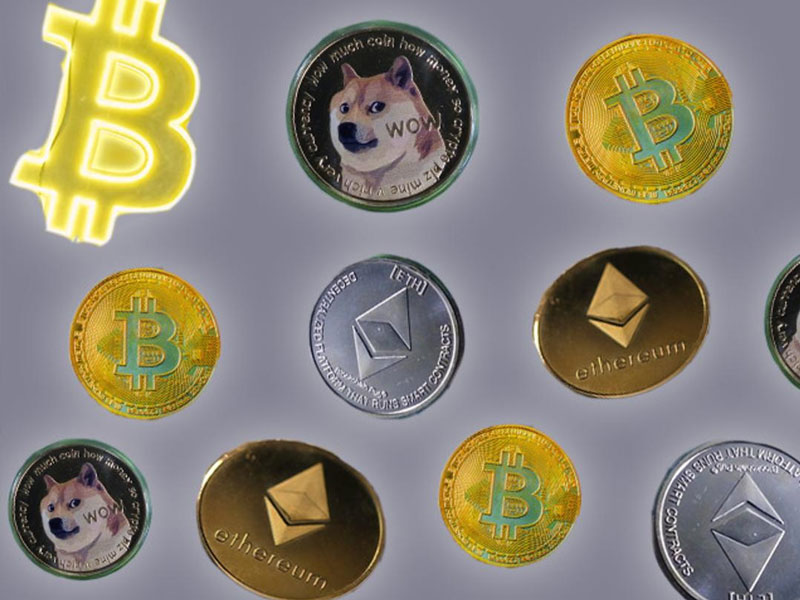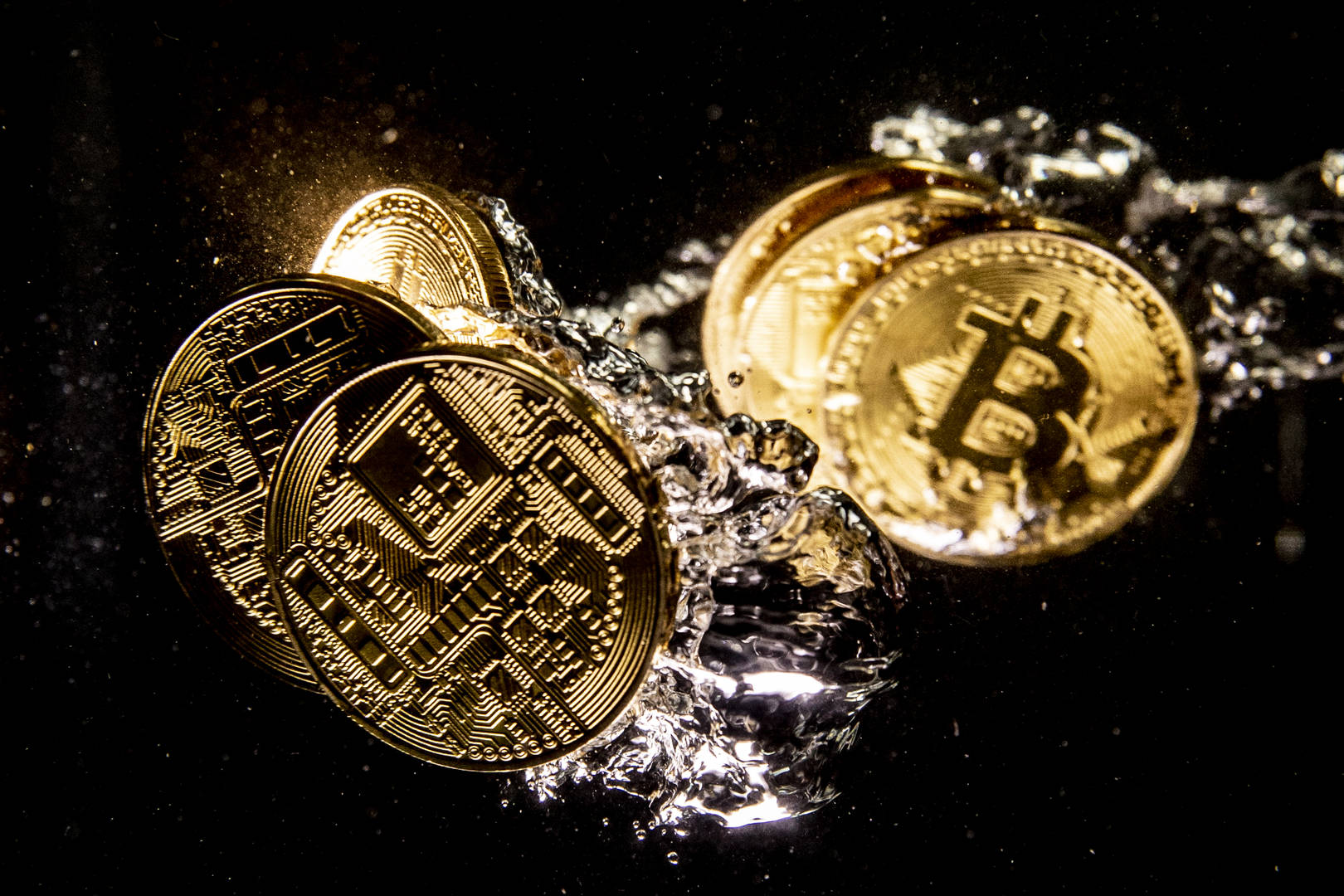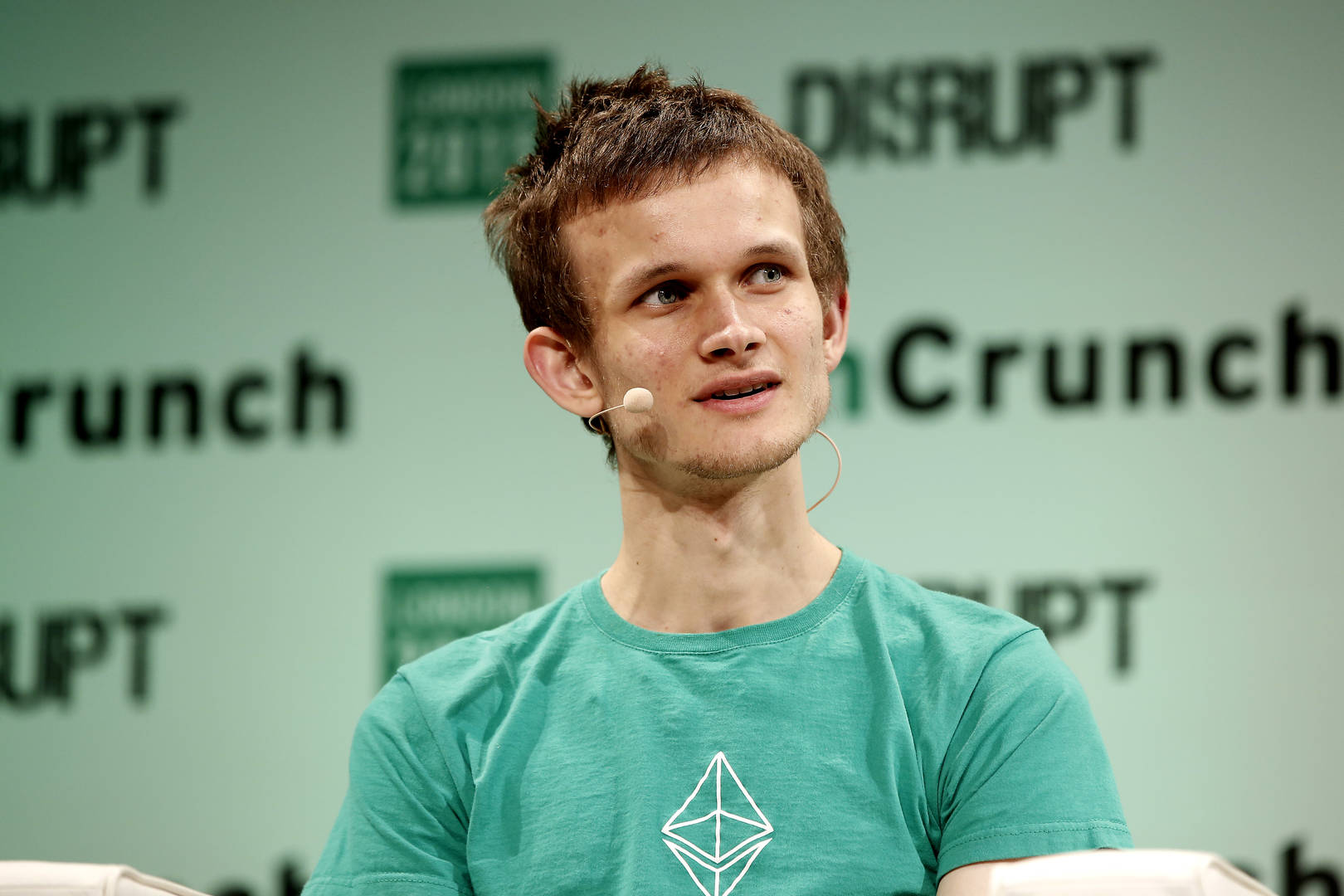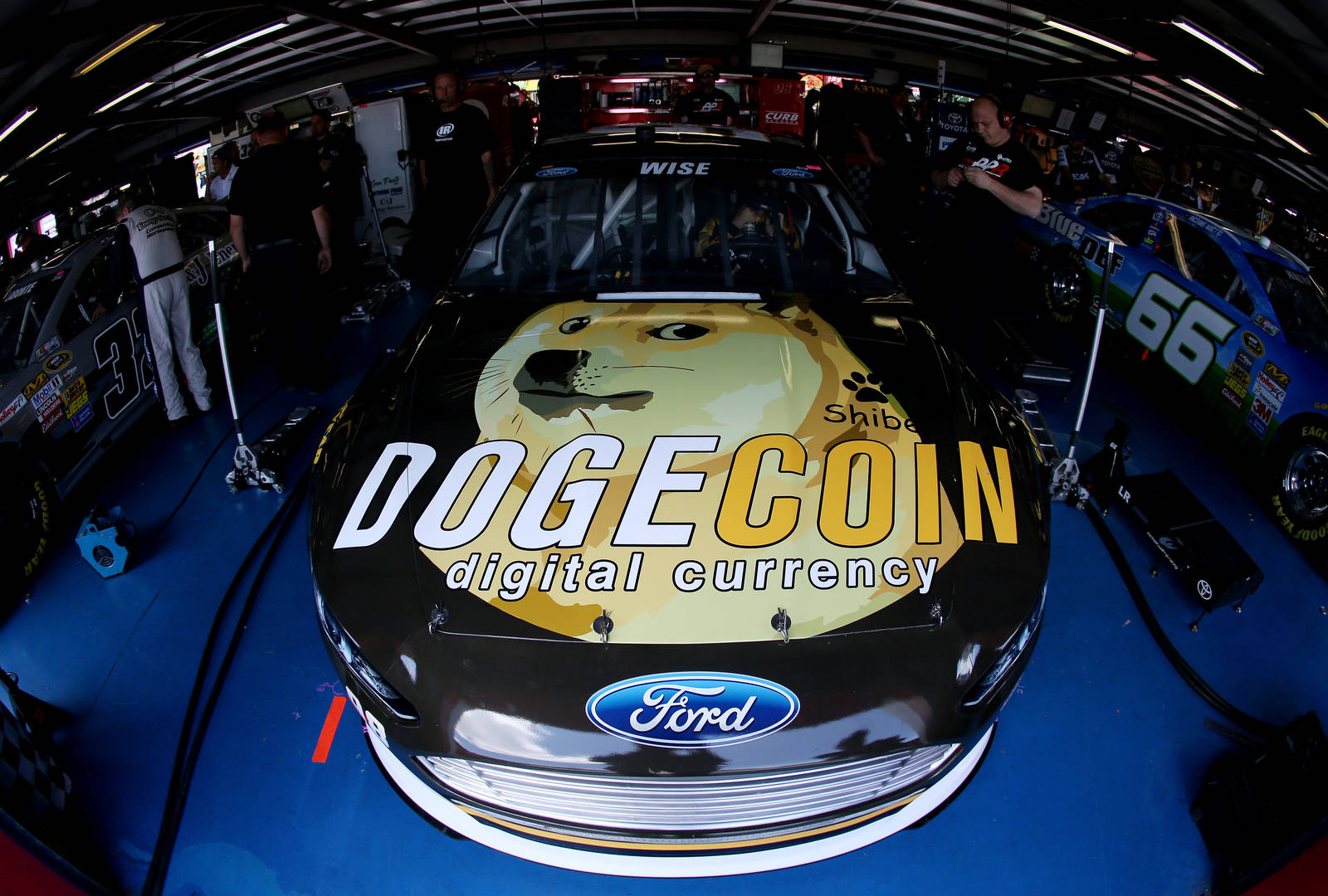Coinbase Expands Multi-Chain Support, Integrates Polygon (MATIC) Network for USDC Deposits
SOURCE: HTTPS://THECURRENCYANALYTICS.COM/
OCT 11, 2023
Bitcoin, Ethereum & the Financial Revolution: A mini guide to Cryptocurrency
SOURCE: HOTNEWHIPHOP.COM
SEP 12, 2021

Costfoto/Barcroft Media, Yuriko Nakao/Getty Images Rafael Henrique/SOPA Images/LightRocket, Carlos Alvarez/Getty Images
Over the past year, Cryptocurrency has been on a meteoric rise and it has led to a lot of curiosity amongst young investors who feel disenfranchised with the typical Wall Street way of doing things. In 2013 and 2017, Bitcoin saw massive returns for investors due to the cryptocurrency's four-year market cycle, and now, in 2021, Bitcoin has exceeded its previous all-time high by $40,000 USD. As of writing this article, the original cryptocurrency is currently worth $46,000 and there are some experts who believe it could go above six figures by the end of the year.
Thanks to Bitcoin's rise, various other cryptocurrencies such as Ethereum, Cardano, Solana, AAVE, and even Dogecoin have also been climbing. For instance, Ethereum was worth just $80 per Ether back in March of 2020 and now, it has reached a peak of $4,300, with some predicting even more returns for long-term investors. Not to mention, the internet's favorite meme currency, Dogecoin, has reached a high of 75 cents, despite the coin costing less than one cent back in January. These massive returns have led to a crypto frenzy, although it has also led to a lot of confusion about what any of these currencies are, and what they actually do.
Luckily, we've compiled a guide that gives you all of the basics you need to know.
*None of the information provided in this article is financial advice. Please exercise caution when investing.*

Dan Kitwood/Getty Images
In 2017, you probably read a lot of stories about people becoming millionaires after investing in Bitcoin in the early 2010s. When Bitcoin hit an all-time high, just under $20,000, people thought the coin was going to go up forever. Of course, this was not the case and in 2018, people saw their portfolios drop faster than they could even blink. To understand why this is the case, we need to go back to 2009, when Bitcoin was first invented.
The original cryptocurrency was invented by someone with the alias of Satoshi Nakomoto. To this day, no one knows who Satoshi is, and it's probably going to stay that way for a very long time. After years of frustration with current banking systems, Bitcoin was created to put the power back in the hands of the people. What makes Bitcoin so special is that it is mined through a decentralized ledger, also known as the Blockchain. The Blockchain contains various transactions that are done using the Bitcoin network. In essence, these blocks are like little Rubik's cubes that contain all of the transaction information. The miners are the ones who are trying to solve these blocks. Once they solve the block, they are then rewarded with Satoshis, which are fractions of Bitcoin. When Bitcoin was first invented, miners were rewarded with a substantial amount of Bitcoin for each block they solved. However, programmed into Bitcoin is a feature where every four years, it becomes twice as hard to mine. This means miners are given fewer rewards, thus making Bitcoin more scarce. This phenomenon is called the "Halving" and it's significant because Bitcoin is hard-capped at a total supply of 21 million Bitcoin. Once all 21 million are mined, you won't be able to mine anymore. In fact, every single Bitcoin will have been mined by the year 2140, which is pretty insane when you think about it.
Thanks to this "Halving," investors are able to plan for what is called a "Bull" market, every four years. For those who are uninitiated, in investing speak, bullish refers to when the market is going up. A "Bull Run" is effectively a large period of time in which a particular asset just continues to go higher and higher. On the opposite end of that spectrum, you have a "Bear" market which means everything goes into hibernation, and asset prices go on a prolonged dip. The first "Bull" market for Bitcoin was in 2013, when the price went as high as $1,000 after being stuck below $1. In 2017, the Bull Run saw a 20x increase from the previous all-time high. However, at the peak of the Bear market in 2018, the Bitcoin price dipped 85 percent, back to $3,000. When the "Halving" takes place, there is essentially a supply shock on the market, which immediately makes the price shoot up due to the laws of supply and demand. Throughout the course of a year, this supply shock continues to build until things stabilize, and investors cash in on their gains, which eventually leads to the Bear market.
As for Bitcoin's utility as an actual currency, well, that is still being debated. When Bitcoin was first introduced, it was being used to buy a whole host of objects on the internet. While some felt like it was purely for illicit activity, it became clear that the currency could also be used to buy everyday items. However, that all changed in the Bull run of 2013, as people realized Bitcoin was too volatile to use as a currency. For instance, a man bought a pizza with 10,000 Bitcoin back in the early 2010s-- and now, that pizza is worth $500 million. Bitcoin is considered as a store of value, much like gold. While you're probably not going to use it to buy anything, it's still something that you can hold on to as a way to hedge against inflation.
However, there are some countries that are looking to use Bitcoin as their actual currency. Just this past week, El Salvador became one of the first countries to adopt BTC as legal tender, and Paraguay is looking to do the same. In nations where inflation is dragging down the value of FIAT (money tied to a country) currencies, Bitcoin is proving to be an effective way for people to protect the value of their money and create some semblance of sustainable wealth. Of course, this doesn't come without risks, as a looming bear market could bring many El Salvadorians back to square one.

John Phillips/Getty Images for TechCrunch
At this point, it seems unlikely that any other cryptocurrency will ever come close to toppling Bitcoin. However, if there is a coin that ends up doing it, it would probably be Ethereum. Created by Vitalik Buterin, Ethereum officially went live back in 2015 as a Smart Contracts solution. Smart Contracts are a part of what is called decentralized finance (DeFi), which is what much of the crypto space is founded on. DeFi is so attractive these days because it takes the power out of the hands of the institutions. Instead, people don't have to worry about the pesky middle man who could go under at a moment's notice. With the population becoming more and more skeptical of our institutions, DeFi has the potential to become the biggest sector since the Dot Com era.
As for Smart Contracts, these allow for people to create contracts amongst each other, without having to deal with third parties. This technology could prove to become an immediate game-changer in the housing markets and even for rideshare services. Instead of having to pay with your credit card which then goes through a bank and a bunch of red tape, you can just send money to the person directly, thus rendering banks useless. Ethereum currently has numerous DeFi projects on its network and with NFTs popping off right now, Ethereum is having its moment in the sun. Not to mention, in places where large portions of the population can't access a bank account, Ethereum can act as a way for everyone to be able to participate in the financial world.
If you've been following Ethereum over the past few months, you've probably heard of "gas fees." With Ethereum, there have been numerous scaling issues that have forced miners to charge obscene fees when processing transactions. This has been a huge source of frustration for those who use the network, as it has meant spending $100 on a $60 transaction. Luckily, Ethereum is going through an update called Eth 2.0 which will fix these issues. Not to mention, EIP-1559 is being implemented in July, which means gas fees will be burned, thus making Ether deflationary. This has adopters excited for the future, and for now, it seems like Eth will continue to lead the way when it comes to DeFi. For those who may not know, EIP-1559 is simply a new protocol that is implemented during the mining process. Now, instead of earning massive rewards in the form of gas fees, miners will have most of their rewards burned off which means less ETH is on the market. It also ensures that miners remain honest when setting their gas fees, regardless of how congested the network might be.
For many in the crypto space, Ethereum is perhaps the most exciting project out there. Many coins and projects are looking to compete with it, however, Ethereum has the advantage of being the first in the space. There is still a lot of work that needs to be done in order to perfect the Smart Contracts platform, but there are plenty of reasons to be optimistic about how Ethereum can shape our future.

Chris Graythen/Getty Images
When it comes to the world of altcoins, you have two distinct groups: legitimate decentralized finance projects that are trying to change the world, and meme coins. If you're getting into crypto right now, then you probably already know about Dogecoin which certainly fits into the meme coin space. There are various other meme coins including Shiba Inu coin and Hokkaidu Inu coin which are both based on man's best friend and are meant to be direct competitors to Dogecoin. The coins themselves don't really have any utility to them and are mostly touted by people who spend way too much time on the internet. If you go on Twitter and TikTok, these are the coins that the youth are trying to push on you, although it feels like more of a joke than an actual endorsement of the technology. While they are definitely popular now, the lack of a use case has many wondering just how long they will actually last.
As for the rest of the altcoin space, there is an overwhelming amount of tokens to choose from. These tokens can do a wide range of things and these days, they are mainly being treated as stocks. The tokens are associated with particular projects that are seeking to provide unique services to the DeFi space. From privacy to insurance to digital media, there are various sectors being explored through the world of DeFi. Within the altcoin space, there are also direct competitors to Ethereum, such as Solana, Cardano, Polkadot, and a whole host of others. All of these DeFi networks have a value associated with their tokens and with the Bitcoin bull run in full swing, these projects have seen massive increases in their market caps. Once again, this value is purely speculative and can crash on a dime. Despite this, the DeFi space has tremendous potential to change the way we view finance, which is definitely not sitting well with the banks right now.
If you look closer at some of the more popular altcoins, you will see various projects that are named after Bitcoin and Ethereum. For instance, there is Ethereum Classic and Bitcoin Cash. Ethereum Classic is actually the original iteration of Ethereum although early on in the network's development, it was hacked which led to the Ethereum we mostly use today. Meanwhile, Bitcoin Cash is a less secure currency that calls itself Bitcoin thanks to forking off from the original network a few years ago. Thanks to its smaller price, many newbie investors go into Bitcoin Cash as it appears more accessible.
Overall, there are a lot of projects you can invest in and at first, it's quite daunting to figure out which ones are worth putting your money into. With this in mind, it's very important to do your own research and really figure out what cryptocurrency excites you from a utilitarian standpoint.

TIMOTHY A. CLARY/AFP via Getty Images
NFTs are one of the newest entities in the crypto space, and these days, they are the object that causes the most confusion. NFT stands for a non-fungible token which effectively means you can't actually spend an NFT on anything, not that you would want to anyway. NFTs can be anything. They can be albums, beats, digital art, skins for video games, pretty well whatever an artist has in mind. These NFTs are sold on the Ethereum network and whenever you buy an NFT, the ownership is displayed on the Blockchain. This means the public can see who owns certain pieces of art which have been sold on the network. This has ultimately made NFTs extremely popular, as investors can now own something that is exclusive and "limited."
So far, some of the biggest artists in the world have created their own NFTs and have sold them for millions of dollars. Investors buy these pieces because they also believe they will increase in value over time. Much like jersey and card-collecting in the sports world, it is believed that these NFTs could rise exponentially in price, which would ultimately yield some massive gains. Perhaps the best part of NFTs is the fact that the original seller will be able to profit off of the resale price. This means artists will continue to make money on their creations even after the original sale, which is definitely creator-friendly. In other sectors, this would not be the case as the artist would be cut out of the process immediately after the initial sale.
However, there are still quite a few kinks that are being worked out when it comes to the NFT space. For example, a lot of the art that is being sold can simply be saved to your computer without any cost. One could take a screenshot of your work, and enjoy it in the same way as the person who actually bought it. This has brought into question the validity of NFTs and whether or not they actually have any value. Effectively, they have value because people say they do, although just like with any other speculative market, the bubble could burst at any moment. Not to mention, some artists have had their previous works turned into NFTs unknowingly which has led to some issues involving copyright. Seeing as the space is so new, there are still a lot of blind spots that need to be worked out before we can truly say NFTs are the future. Regardless, this is a sector that needs to be taken seriously, especially with so many artists diving in headfirst.
With a total cryptocurrency market cap of over $1.5 trillion, it's clear that this is one of the fastest-growing sectors in the financial world. While the environmental concerns still need to be worked out and addressed, it's obvious that many of these projects and innovations can still have a positive effect on how humans navigate what has largely been a one-sided financial system.
LATEST NEWS
WHAT'S TRENDING


Data Science
5 Imaginative Data Science Projects That Can Make Your Portfolio Stand Out
OCT 05, 2022

SOURCE: HTTPS://THECURRENCYANALYTICS.COM/
OCT 11, 2023
SOURCE: HTTPS://FORKAST.NEWS/
SEP 25, 2023
SOURCE: WWW.BUSINESSTODAY.IN
AUG 11, 2023
SOURCE: HTTPS://COINTELEGRAPH.COM/
JUL 19, 2023
SOURCE: HTTPS://WWW.BUSINESS-STANDARD.COM
JUL 06, 2023